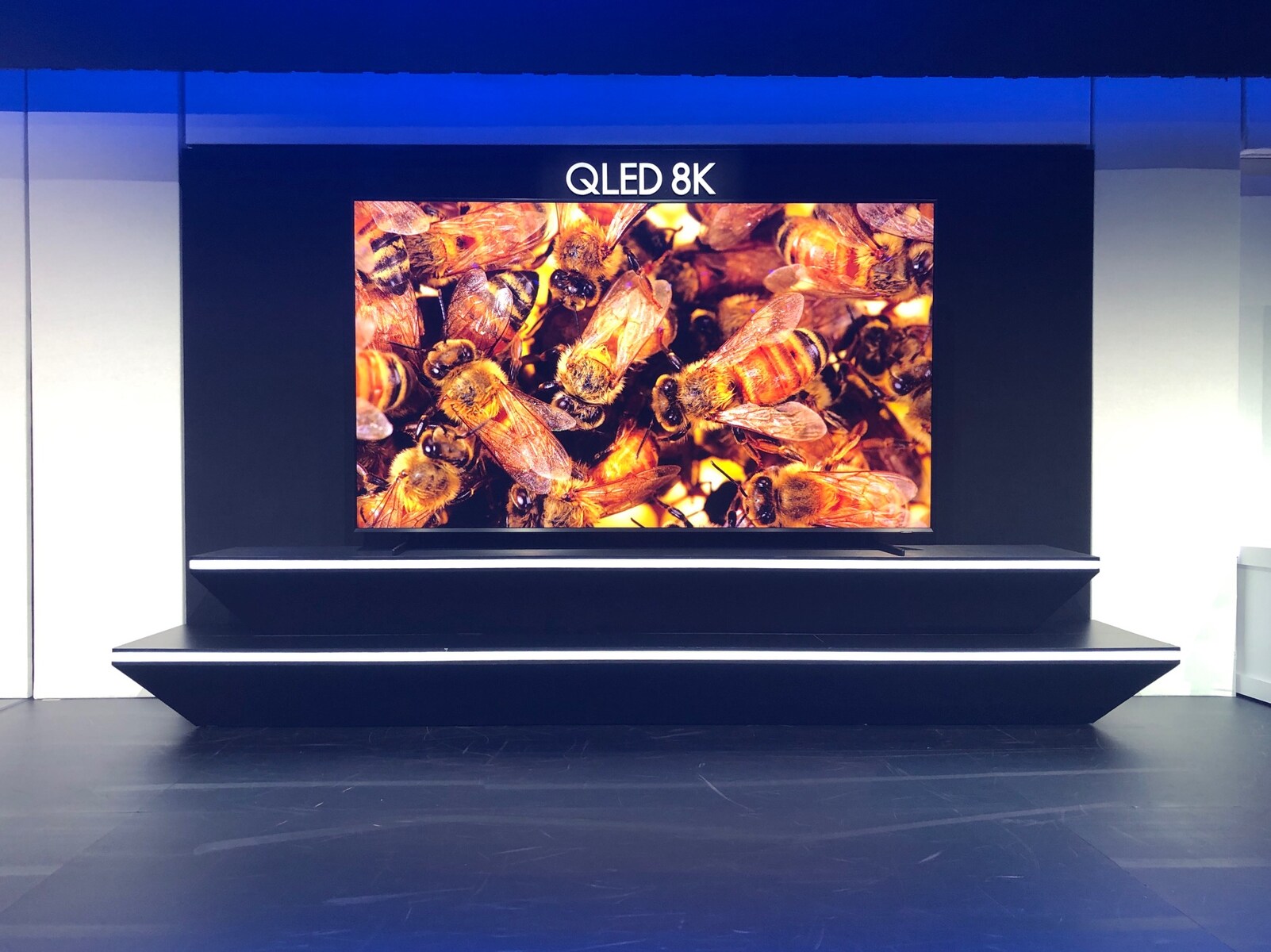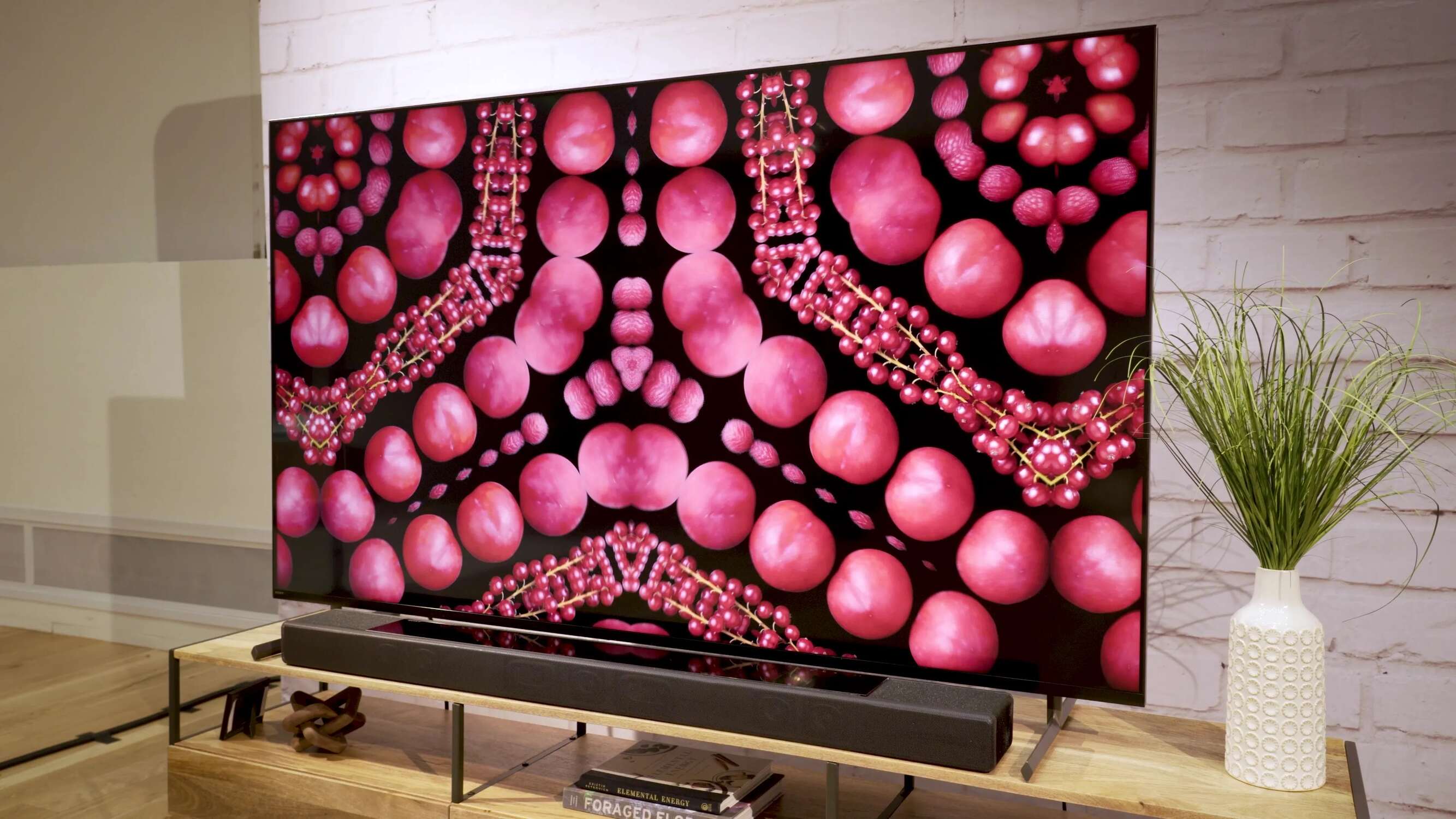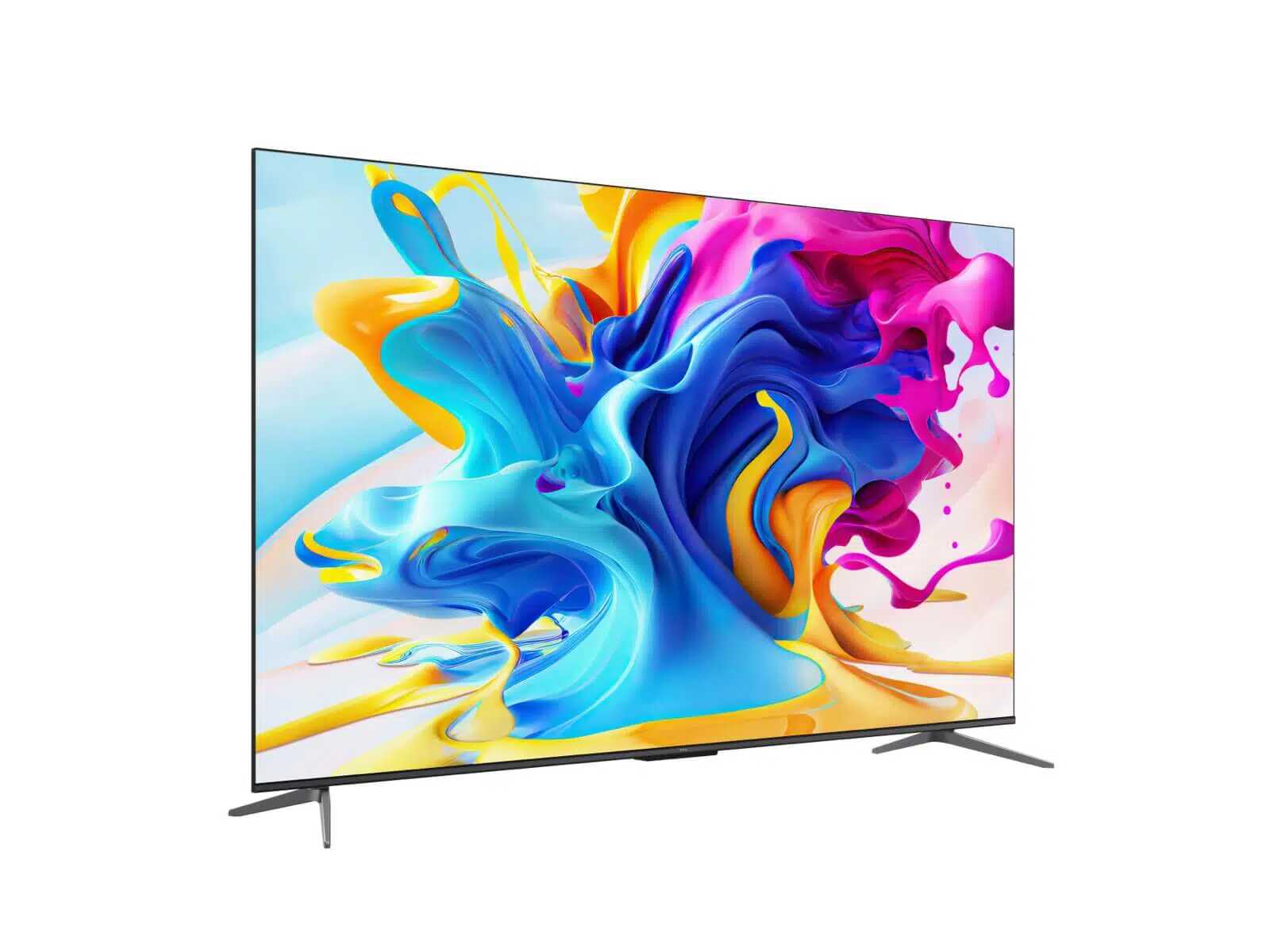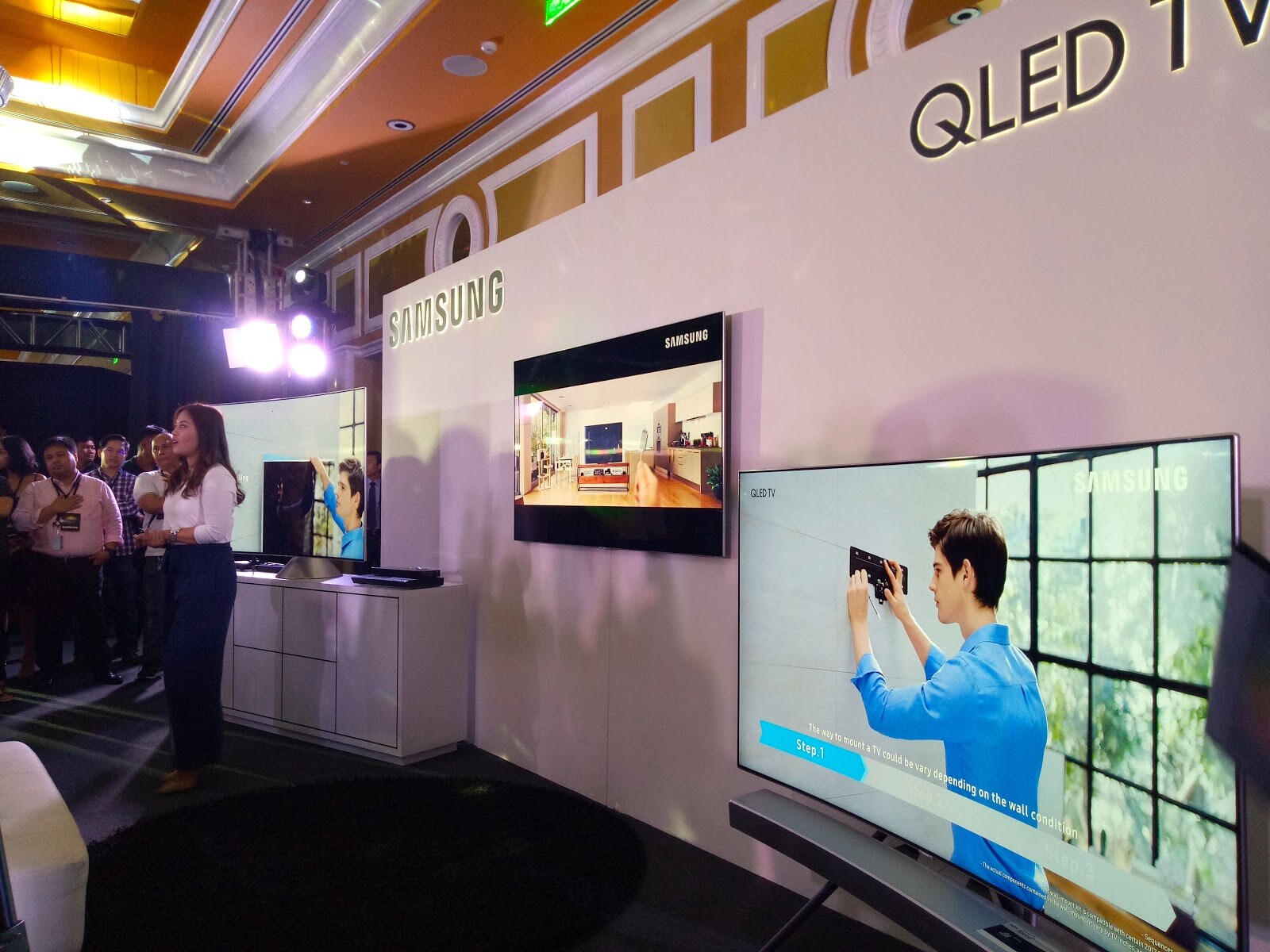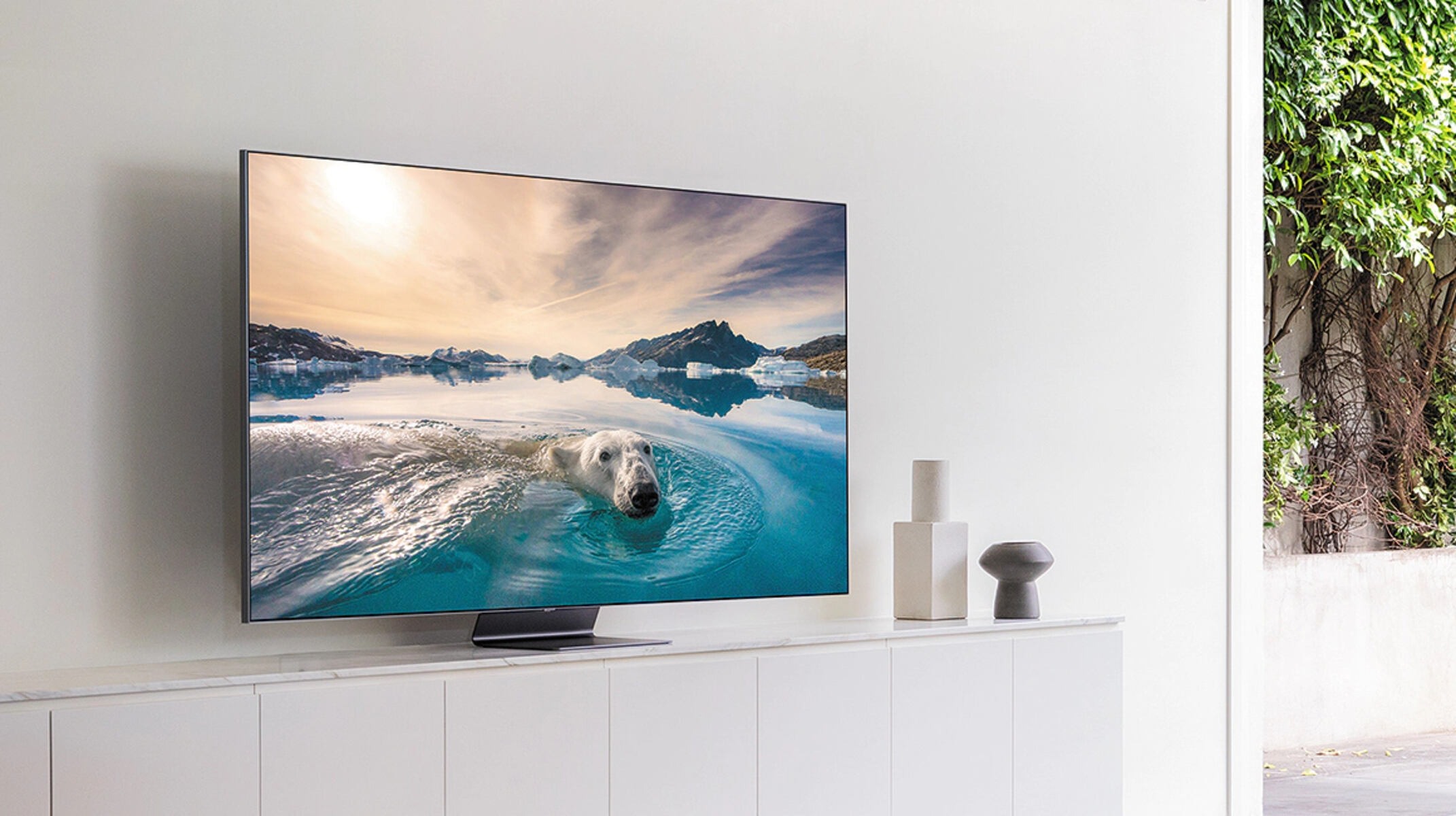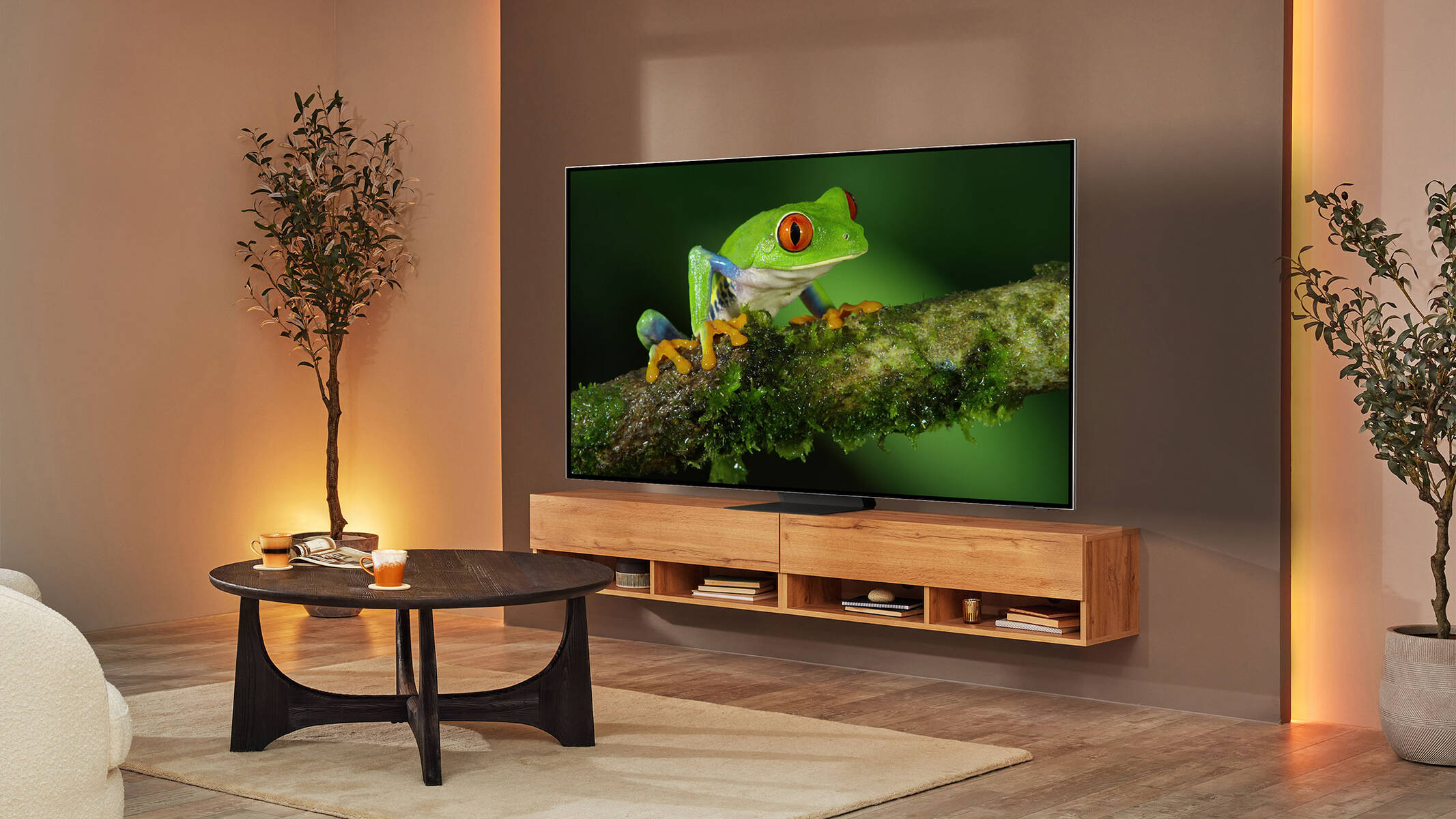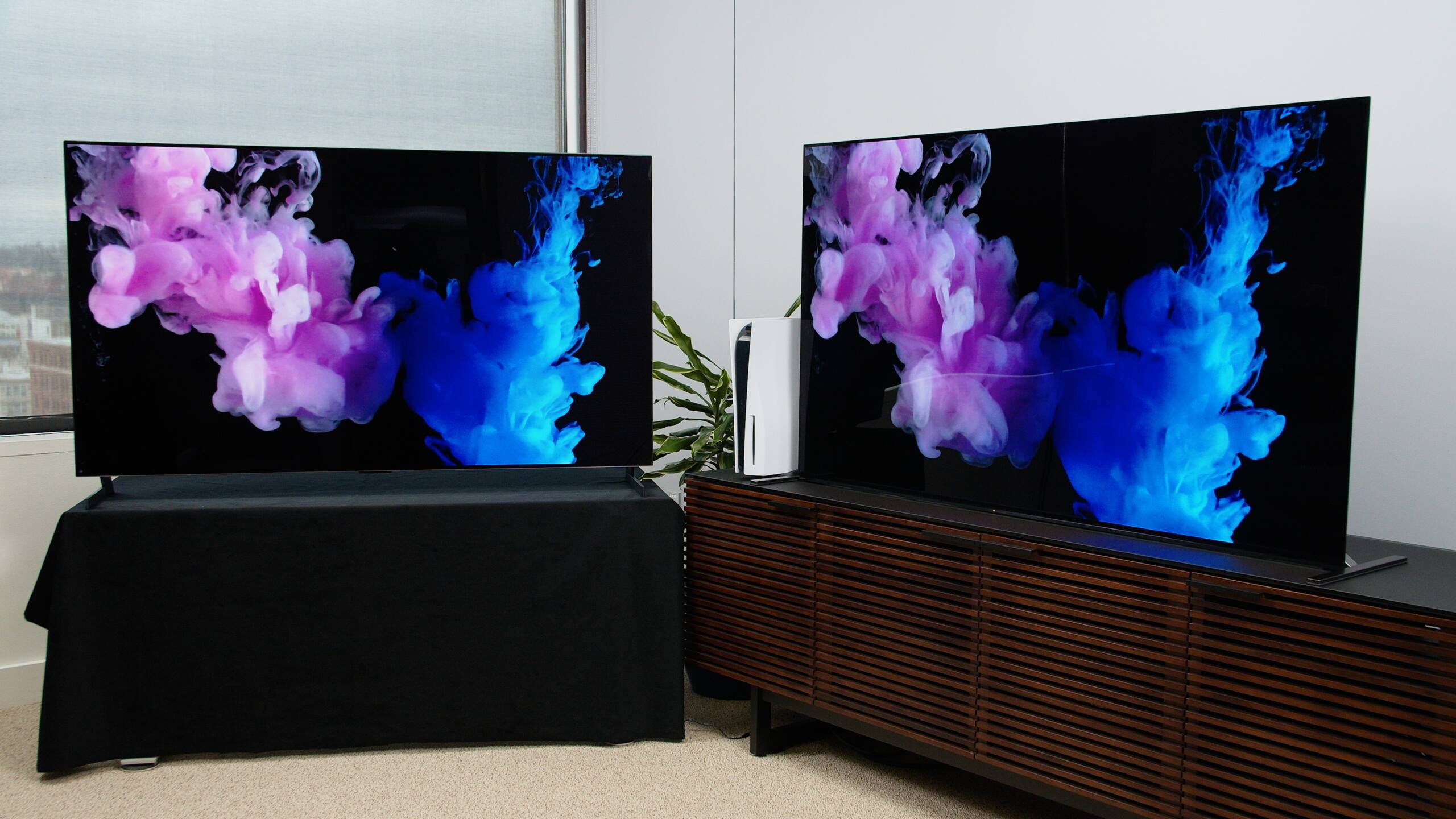Introduction
Welcome to the world of QLED technology, where vibrant colors and stunning visuals come to life. QLED TVs have quickly become a popular choice among consumers who crave the best in image quality. But just like any electronic device, you may be wondering how long a QLED TV will last before it needs to be replaced.
Before we delve into the lifespan of a QLED TV, let’s first understand what QLED technology is all about. QLED stands for Quantum Dot Light Emitting Diode, and it is a display technology that utilizes quantum dots to enhance color accuracy and brightness.
Unlike traditional LCD displays, QLED TVs offer a wider color gamut, deeper blacks, and brighter whites, resulting in a more immersive viewing experience. Whether you’re watching your favorite movies, playing video games, or enjoying your favorite TV shows, a QLED TV brings every detail to life with stunning precision.
Now, when it comes to the longevity of a QLED TV, there are several factors that can influence its lifespan. From the quality of the components to how well you take care of the TV, these factors will determine how long your QLED TV will continue to provide you with excellent performance.
In this article, we will explore the average lifespan of a QLED TV, as well as some tips on how to extend its longevity. We will also discuss the signs that indicate your QLED TV may be nearing the end of its lifespan and whether it’s better to upgrade or replace your TV when the time comes.
What is QLED Technology?
QLED technology, short for Quantum Dot Light Emitting Diode, is a display technology that has revolutionized the television industry. It combines quantum dots, which are tiny semiconductor particles, with LED backlighting to deliver exceptional color accuracy, brightness, and contrast.
Unlike traditional LCD (Liquid Crystal Display) TVs, QLED TVs use quantum dots as a color filter. These quantum dots emit precise colors when exposed to light, resulting in a wider color gamut and more vibrant and lifelike images. The quantum dots in a QLED TV are capable of producing billions of colors, allowing for a truly immersive viewing experience.
Another key feature of QLED technology is its ability to achieve high levels of brightness. QLED TVs utilize LED backlighting to illuminate the quantum dots, resulting in brighter whites and deeper blacks. This creates a more dynamic image with enhanced contrast, making details in highlights and shadows more pronounced.
One of the advantages of QLED technology is its ability to provide consistent picture quality, regardless of the viewing angle. Unlike some other display technologies, QLED TVs maintain their color accuracy and brightness even when viewed from the sides, making them ideal for larger rooms or households with multiple viewers.
In addition to its impressive picture quality, QLED TVs also offer other features that enhance the overall viewing experience. Many QLED models feature a high refresh rate, which reduces motion blur in fast-paced scenes, making them perfect for watching sports or playing video games. Some QLED TVs also support HDR (High Dynamic Range) content, which further enhances the color, contrast, and detail in both dark and bright areas of the screen.
Overall, QLED technology has set a new standard in display quality with its vibrant colors, high brightness, and excellent viewing angles. Whether you’re a movie enthusiast, a gamer, or simply looking to elevate your TV viewing experience, a QLED TV is sure to impress with its cutting-edge technology and stunning visual performance.
Factors that Affect the Lifespan of a QLED TV
The lifespan of a QLED TV can vary depending on several factors. Understanding these factors can help you make informed decisions about your TV and take the necessary steps to prolong its lifespan. Here are some key factors that can influence how long your QLED TV will last:
- Quality of Components: The quality of the components used in manufacturing the QLED TV plays a significant role in its lifespan. TVs from reputable brands with a proven track record of using high-quality materials and components are more likely to last longer.
- Usage Patterns: The way you use your QLED TV can affect its lifespan. TVs that are used for extended periods without breaks or frequently left on standby mode may experience more wear and tear, reducing their lifespan. It’s important to follow recommended usage guidelines and give your TV occasional breaks to maximize its longevity.
- Environmental Factors: The environment in which your QLED TV is placed can impact its lifespan. Exposure to extreme temperatures, high humidity, dust, and direct sunlight can all contribute to a shorter lifespan. It’s best to keep your TV in a cool, well-ventilated area away from direct sunlight to minimize any potential damage.
- Maintenance and Care: Proper maintenance and care can significantly extend the lifespan of your QLED TV. Regular cleaning of the screen and the surrounding area, as well as ensuring proper ventilation to prevent overheating, can help maintain optimal performance and prevent any issues that may arise from neglect.
- Power Surges and Electrical Issues: Power surges or electrical fluctuations can cause damage to your QLED TV’s internal components. Investing in a quality surge protector or using a voltage stabilizer can help protect your TV from sudden spikes in power, increasing its lifespan.
- Software Updates: Regular software updates provided by the manufacturer are essential for the performance and longevity of your QLED TV. These updates often include bug fixes, security patches, and new features that can enhance the TV’s functionality and address any potential issues that may arise over time.
By considering these factors and taking the necessary precautions, you can help ensure that your QLED TV lasts for many years to come, providing you with countless hours of entertainment and enjoyment.
The Average Lifespan of a QLED TV
When it comes to the average lifespan of a QLED TV, there isn’t a one-size-fits-all answer. The lifespan can vary depending on several factors, including the brand, model, usage patterns, and overall maintenance. However, on average, you can expect a QLED TV to last anywhere from 7 to 10 years.
It’s important to remember that this estimate is just a general guideline, and there are instances where a QLED TV may last longer or shorter. TVs from reputable brands with high-quality components tend to have a longer lifespan compared to lower-end models.
The actual lifespan of your QLED TV can also be influenced by how you use it. If you consistently use your TV for long hours every day, it may experience more wear and tear, potentially shortening its lifespan. On the other hand, if you use your TV sparingly and take proper care of it, it could last well beyond the average estimate.
Another factor that can impact the lifespan of a QLED TV is advancements in technology. As technology continues to evolve, newer models may offer improved features and capabilities. While your QLED TV may still function after 7 to 10 years, you might find that newer models provide a more immersive viewing experience or have additional features that you desire.
It’s worth noting that warranty periods provided by manufacturers can give you an idea of their confidence in their products’ lifespan. Many QLED TVs come with a warranty that typically covers defects and malfunctions for a specific period, such as 3 to 5 years. This indicates that the manufacturers believe their TVs should at least last through the warranty period.
Ultimately, the lifespan of a QLED TV can vary, and it’s important to keep in mind that technology is constantly evolving. While your QLED TV may last for several years, there may come a point where an upgrade becomes desirable to take advantage of newer features and technologies.
By understanding the average lifespan and considering your individual needs and usage patterns, you can make informed decisions about when it’s time to replace your QLED TV and upgrade to a newer model.
How to Extend the Lifespan of a QLED TV
If you want to maximize the lifespan of your QLED TV and ensure it continues to perform at its best, there are several steps you can take to extend its longevity:
- Proper Ventilation: Ensure that your QLED TV has proper ventilation to prevent overheating. Avoid placing it in enclosed spaces or near heat sources. Make sure the vents are not blocked, allowing for adequate airflow.
- Regular Cleaning: Dust and dirt can accumulate on the screen and other parts of your QLED TV, affecting its performance. Clean the screen and surrounding areas gently with a microfiber cloth. Avoid using harsh chemicals or abrasive materials that can cause damage.
- Avoiding Extreme Temperatures: Keep your QLED TV in a room with a stable temperature. Extreme heat or cold can negatively impact the TV’s components and shorten its lifespan. Avoid placing it near windows, which can expose it to direct sunlight.
- Use a Surge Protector: Power surges can damage your QLED TV’s internal components. Invest in a high-quality surge protector to protect against sudden voltage spikes. This will help extend the lifespan of your TV and safeguard it from electrical damage.
- Utilize Power Management Features: Many QLED TVs come with power management features such as automatic standby mode or energy-saving settings. Use these features to minimize power consumption and reduce unnecessary wear on the TV’s components.
- Keep Firmware Updated: Regularly check for firmware updates provided by the manufacturer and install them as they become available. Firmware updates often contain bug fixes, performance improvements, and new features that can optimize your QLED TV’s functionality and improve its lifespan.
- Avoid Screen Burn-in: QLED TVs are less prone to screen burn-in compared to OLED TVs, but it’s still advisable to prevent static images from being displayed for extended periods. Use screensavers or periodically change the content on the screen to avoid the risk of permanent image retention.
- Handle with Care: When moving or cleaning your QLED TV, handle it with care to prevent accidental damage. Avoid placing excessive pressure on the screen and use caution when connecting or disconnecting cables.
By following these practices, you can help ensure that your QLED TV remains in excellent condition and extends its lifespan. Remember, proper maintenance and responsible usage go a long way in preserving the performance and longevity of your QLED TV.
Signs that Your QLED TV is Nearing the End of its Lifespan
As your QLED TV ages, it may start showing signs that it is nearing the end of its lifespan. Recognizing these signs can help you determine if it’s time to consider replacing your TV. Here are some common indications that your QLED TV may be nearing the end of its lifespan:
- Persistent Image Issues: If you notice persistent image problems, such as screen flickering, color distortion, or dead pixels, it could be a sign that the internal components of your QLED TV are starting to deteriorate.
- Diminished Picture Quality: Over time, the brightness and overall picture quality of your QLED TV may reduce. If you find that the display is no longer as vibrant or sharp as it once was, it could be a sign of aging components.
- Increased Power Consumption: A QLED TV nearing the end of its lifespan may start consuming more power than usual. If you notice a significant spike in your electricity bill or your TV seems to be using more power to achieve the same level of brightness, it may indicate underlying issues with the internal components.
- System Errors or Freezing: If your QLED TV frequently experiences system errors, freezes, or crashes, it may be a sign of internal hardware issues. As the components age, they may struggle to keep up with the demands of modern software, resulting in performance problems.
- Audio Problems: Deteriorating audio quality or issues with sound output can also indicate that your QLED TV is reaching the end of its lifespan. If you notice distorted sound, inconsistent volume levels, or the speakers producing unusual noises, it could be a sign of internal component failure.
- Increasing Repairs: If you find yourself frequently needing to repair your QLED TV or encountering multiple issues within a short period, it may be a sign that the TV is experiencing age-related problems. As the components degrade over time, they become more prone to failure.
- Outdated Features: As technology advances, newer models of QLED TVs may offer a range of innovative features that your current TV lacks. If you find that your TV is no longer compatible with the latest apps, streaming services, or lacks essential features, it could be a sign that it’s time to consider an upgrade.
It’s important to note that these signs may not necessarily mean that your QLED TV will stop functioning immediately. However, they are indicators that the TV’s performance may diminish significantly, and the cost of repairs and maintenance may outweigh the benefits of keeping the TV.
Ultimately, if you notice multiple signs and your QLED TV is no longer providing the experience you desire, it may be a good time to start exploring newer models or considering an upgrade.
Should You Upgrade or Replace?
When your QLED TV is nearing the end of its lifespan or showing signs of age, you may be faced with the decision of whether to upgrade or replace it. Here are some factors to consider in making that decision:
- Cost of Repairs: If your QLED TV requires frequent repairs or if the cost of repairing it is close to the price of a new TV, it may be more cost-effective to replace it. Investing in a new TV can provide you with updated technology and features, as well as a warranty for added peace of mind.
- Available Features and Technology: If your current QLED TV lacks the latest features, such as higher screen resolution, advanced HDR support, or smart TV capabilities, upgrading to a newer model can enhance your viewing experience. Newer models often have improved picture quality, smoother performance, and access to a wider range of streaming apps.
- Desired Screen Size: If you feel that your current QLED TV no longer meets your desired screen size or aesthetic preferences, upgrading to a larger or differently designed TV may be the right choice. Consider your viewing area and entertainment needs when deciding on the size and style of your new TV.
- Long-Term Value: Upgrading to a newer QLED TV means you’ll have a product with a longer expected lifespan and potential future-proofing. The advancements in technology and features of newer models can provide a better long-term value compared to keeping an aging TV that may soon become outdated or unsupported.
- Budget and Personal Circumstances: Your budget and personal circumstances play a crucial role in the decision-making process. Consider your financial situation and the importance of having the latest TV technology. If you have the means and value the benefits of a new TV, upgrading may be a worthwhile investment.
- Enjoyment and Entertainment: Ultimately, the decision to upgrade or replace your QLED TV comes down to your personal enjoyment and entertainment needs. If you’re no longer satisfied with the performance or features of your current TV and if a new TV can greatly enhance your viewing experience, it may be worth considering an upgrade.
It’s essential to weigh these factors against your individual preferences and circumstances. Evaluate the condition and limitations of your current QLED TV and compare them to the benefits and opportunities offered by newer models. Additionally, consider consumer reviews, expert opinions, and the reputation of brands and models to make an informed decision.
Remember, technology is constantly evolving, and upgrading your QLED TV can provide you with a more immersive entertainment experience, improved performance, and the latest features. However, the decision ultimately depends on your priorities, preferences, and budget.
Conclusion
QLED technology has undoubtedly transformed the way we experience television, offering vibrant colors, impressive brightness, and exceptional picture quality. The average lifespan of a QLED TV ranges from 7 to 10 years, although this can vary depending on various factors. By understanding these factors and taking steps to extend the lifespan of your QLED TV, you can enjoy high-quality entertainment for many years.
Factors such as the quality of components, usage patterns, maintenance, and environmental factors can impact the longevity of your QLED TV. Taking measures like proper ventilation, regular cleaning, and utilizing power management features can help prolong its lifespan. It’s also important to be aware of signs that indicate your QLED TV may be nearing the end of its lifespan, such as persistent image issues, diminished picture quality, and increased power consumption.
When the time comes to decide whether to upgrade or replace your QLED TV, consider factors such as the cost of repairs, available features and technology, long-term value, budget, and personal circumstances. Evaluate your current TV’s performance and compare it to the benefits offered by newer models in terms of picture quality, screen size, and additional features. Ultimately, the decision should be based on your enjoyment, entertainment needs, and budget.
As technology continues to advance, newer QLED TVs will offer even more impressive features and enhanced performance. Whether you choose to upgrade or replace, you can look forward to an exceptional viewing experience that brings your favorite movies, TV shows, and games to life.
Remember to conduct thorough research, read reviews, and consult experts before making a decision. By considering all the factors and making an informed choice, you can find the perfect QLED TV that meets your needs and provides you with years of immersive and enjoyable entertainment.







